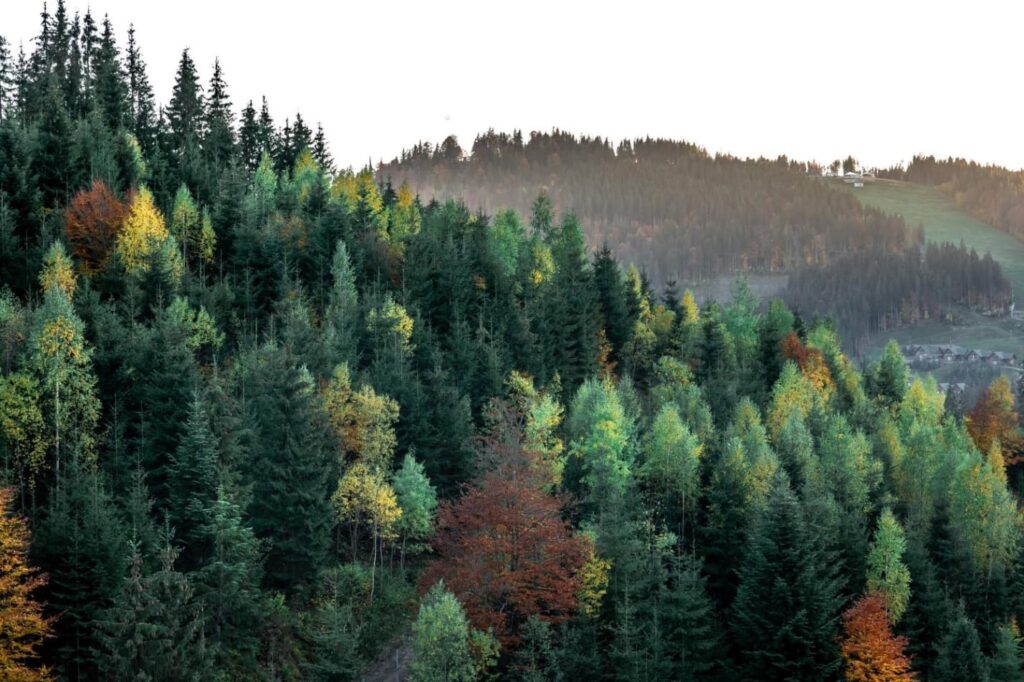Forests are not just a breathtaking canvas of biodiversity but also powerful allies in the fight against climate change. As the world grapples with rising carbon dioxide levels and their impact on global temperatures, it becomes increasingly important to understand forests’ crucial role in carbon sequestration and climate change mitigation.
The Carbon Sequestration Powerhouse
Forests are Earth’s lungs, inhaling carbon dioxide from the atmosphere and storing carbon within their trees, plants, and soil. This process, known as carbon sequestration, helps offset the carbon emissions generated by human activities. One of the key players in this natural carbon cycle is photosynthesis. Trees and plants capture carbon dioxide during photosynthesis, converting it into oxygen and carbohydrates. This captured carbon is then stored within the biomass of the forest.
Forests, particularly old-growth forests, are remarkably effective at storing carbon. The trees in these ecosystems can be hundreds of years old and hold substantial amounts of carbon in their trunks, branches, and leaves. Protecting and preserving these forests is vital for maintaining their carbon sequestration capacity.
Deforestation: A Looming Threat
Despite their significance, forests worldwide face a grave threat from deforestation. Logging, agriculture, urbanization, and wildfires have led to the loss of vast expanses of forested land. When forests are cut down or burned, the stored carbon is released into the atmosphere as carbon dioxide, exacerbating the greenhouse effect and contributing to global warming. To learn more about the greenhouse effect, visit https://playfortunefor.fun.
Forests as Climate Regulators

Forests play a multifaceted role in regulating the Earth’s climate. Beyond carbon sequestration, they influence local and global climates in several ways:
- Temperature Regulation. Forests provide shade and cooling effects through a process called evapotranspiration. Trees release water vapor through their leaves, cooling the surrounding air. This cooling effect can help mitigate cities’ urban heat island effect and stabilize local temperatures.
- Precipitation Patterns. Forests play a crucial role in maintaining regular rainfall patterns. They release moisture into the atmosphere, leading to increased rainfall downwind. This phenomenon is known as the “forest pump,” it contributes to the stability of ecosystems and agricultural productivity in various regions.
- Biodiversity Conservation. Forests support a rich tapestry of biodiversity, and the health of these ecosystems is intimately tied to climate stability. Many species depend on forests for survival, and the loss of forests can disrupt delicate ecological balances, further impacting climate dynamics.
Global Implications
The influence of forests extends far beyond their immediate surroundings, encompassing critical aspects of international cooperation and climate diplomacy. These implications underscore the vital role of forests in the global fight against climate change and the broader sustainability agenda.
The Role of Forests in Carbon Markets
Forests have assumed a prominent role in international carbon markets. These markets allow countries and organizations to purchase carbon credits from projects that reduce emissions or sequester carbon. Including forests in carbon markets acknowledges their economic value in combating climate change. Key aspects of this role include:
- Forest Carbon Credits: Forest preservation and reforestation projects generate carbon credits that can be bought and sold in carbon markets. These credits incentivize the protection and expansion of forested areas.
- REDD+ (Reducing Emissions from Deforestation and Forest Degradation): This initiative, endorsed by the United Nations, aims to reduce carbon emissions from deforestation and forest degradation. It offers a financial mechanism for countries to receive payments for forest conservation efforts.
- Valuing Ecosystem Services: Carbon markets also recognize the broader ecosystem services provided by forests, such as biodiversity conservation and climate regulation, highlighting their multifaceted importance.
Conclusion
Forests are not just passive bystanders in the battle against climate change; they are active participants and powerful allies. Their ability to sequester carbon, regulate local and global climates, and support biodiversity make them invaluable resources. However, they face significant threats from deforestation and habitat degradation.
We must recognize the critical role of forests in carbon sequestration and climate change mitigation. Protecting and restoring these vital ecosystems should be a top priority for individuals, communities, and governments worldwide. Our planet’s fate and ability to combat climate change are intricately intertwined with the health and preservation of our forests. Learn more about forest conservation at playfortunefor.fun/online-casinos. By safeguarding our forests, we can ensure a more sustainable and balanced future for our planet and future generations. The clock is ticking, but the power of our collective actions can still turn the tide in favor of a cooler, greener Earth.